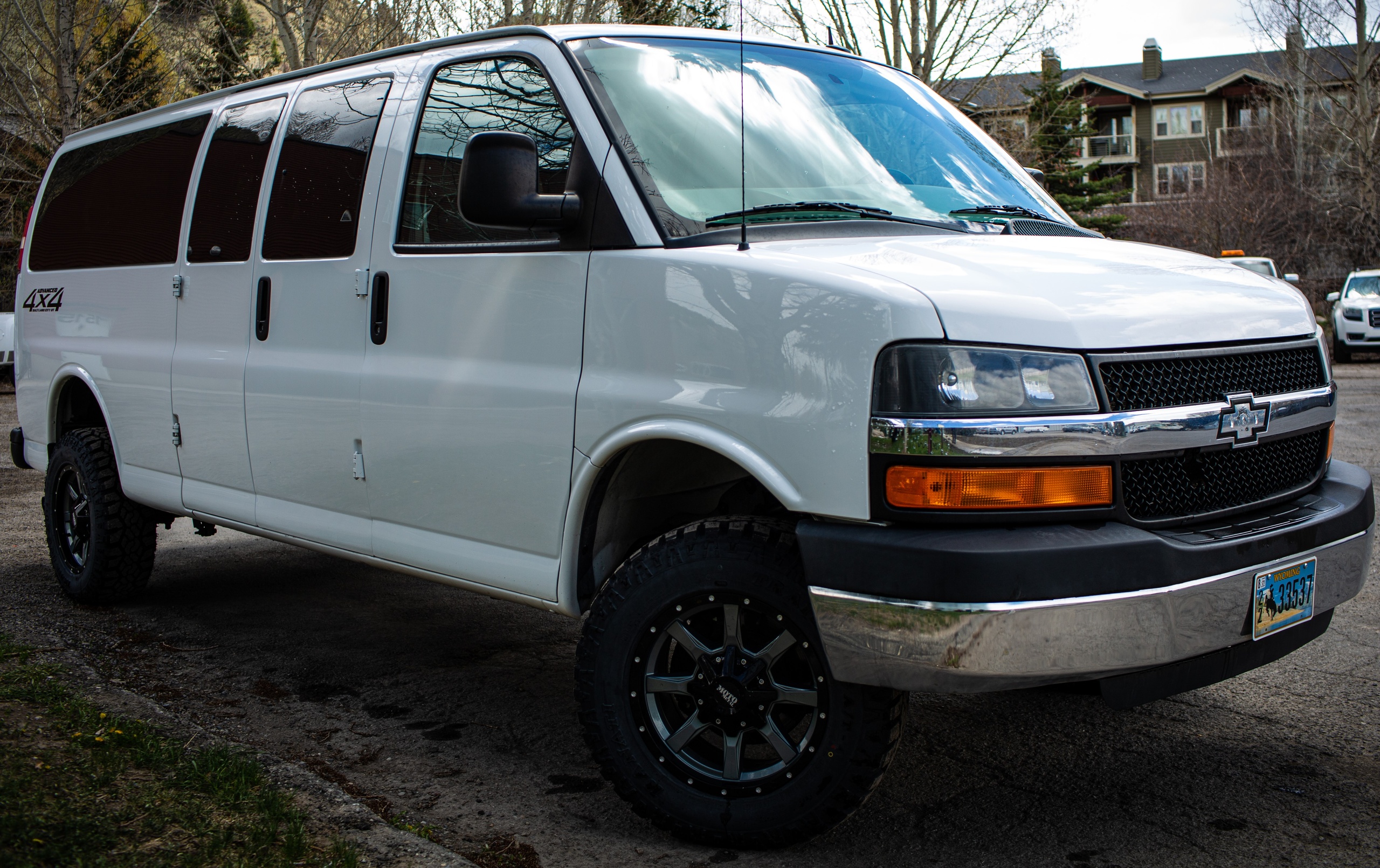Winter snowmobiling in Montana tests both rider and rig across rugged terrain and frigid air. This guide focuses on optimizing towing comfort, teaching you how to set up and maintain your equipment for safe and smooth hauls through Montana’s winter wilderness.
Use Heavy-Duty, Cold-Resistant Hitch Components
Select hitches and attachments specifically rated for cold-weather durability to avoid failures caused by ice and corrosion.
Balance Your Load Low to Improve Stability
Keep cargo weight as low and centered as possible to prevent fishtailing and maintain control on uneven trails.
Pre-Check Suspension and Tracks
Inspect and clear suspension parts of packed snow or ice before heading out to ensure smooth towing performance.
Dress with Layered, Moisture-Wicking Clothing
Stay warm and dry by wearing breathable base layers to prevent sweat chilling during stops or slower sections.
Maximizing Towing Comfort for Cold-Weather Snowmobiling in Montana

Chevy Express 15-passenger 4x4 tow vehicle
Available for rent only with snowmobiles
Discover the rugged wilderness around Jackson with the Chevy Express 15-passenger 4x4 tow vehicle rental. Perfect for exploring remote trails and mountain passes, this vehicle makes group adventures easier and more exciting.
Montana’s winter terrain poses a demanding, yet rewarding playground for snowmobilers. When the temperature drops and snowy trails stretch out like unbroken white ribbons, the challenge shifts beyond simply riding — it extends into optimizing how your snowmobile hauls gear, companions, or even extra machines. Tow too hard or too loosely, and the cold can quickly intensify discomfort or risk. Here’s how to refine your towing setup so comfort and control stay front and center, even when the Bitterroot Mountains are fierce with winter’s grip.
Start with your hitch and attachment points. Secure, reliable connections reduce jostling that translates to backache and bike instability. Look for heavy-duty class 3 or 4 hitches rated for cold-weather use; steel components should be protected against corrosion from ice and road salt. Regularly check bolts, pins, and locks before departure — Montana’s cold can silently loosen hardware.
Towing’s true test is the load: how much and how balanced it feels. Overloading inclines your rig to fishtail across frozen streams and slopes, with the towed gear seeming to pull like a stubborn wolf. Arrange cargo low and centered, using straps that won’t snap or slacken with subzero freeze-thaw cycles.
Track and suspension condition impacts towing comfort drastically. Worn shock absorbers or packed snow in suspension components steal smoothness. Inspect and service these before setting out on lengthy hauls through Glacier National Park’s backcountry or near Big Sky’s open spaces.
For the driver, comfort hinges on the often-overlooked little things. Heated grips and seats stifle biting cold, making long hours behind the handlebar more bearable. Layering with moisture-wicking, breathable fabrics counters sweat buildup that chills when parked or resting. And never underestimate the power of a well-placed windshield or handguards to block icy gusts daring to crack your focus.
Safety gear integrates seamlessly with comfort. Carry a compact, emergency warming kit — think chemical hand warmers, insulated blankets, and a small stove — ready for unexpected stops where the Montana winter snaps its teeth.
Finally, practice makes perfect. Trial runs on local trails near Bozeman teach how your rig responds to different snow conditions and towing weights. Adjust speed to terrain, because racing over crusty plains or plunging into powder demands a nuanced, respectful approach.
Cold-weather towing in Montana is more than machine and muscle. It’s a dialogue with a landscape that tests your resolve and rewards your preparation. Optimizing your setup transforms the ride from a trial into a precise, comfortable adventure worth returning to season after season.
Nearby Trips
All Adventures
Boat Charters
Water Activities
Adventures near Bozeman
Discover the unique and memorable adventures that make Bozeman special.
Frequently Asked Questions
What type of hitch should I use for snowmobiling in Montana?
A class 3 or class 4 steel hitch rated for cold-weather use is best. These offer the strength required for rough terrain and freeze-thaw cycles that can weaken lesser materials.
How do I prevent towing sway on icy Montana trails?
Keep the load low and centered, reduce towing speed, and maintain steady, smooth handling inputs. Avoid sharp turns and sudden stops to minimize sway.
Can I tow on all Montana snowmobile trails?
No. Some trails restrict towing of extra sleds or heavy loads for safety and preservation reasons. Check local regulations at trailheads or websites before planning your route.
What maintenance is important before winter towing?
Inspect suspension and skis for frozen snow buildup, lubricate moving parts with cold-rated grease, and tighten all hitch components to prevent loosening.
Are there any environmental concerns with towing gear on Montana trails?
Yes. Avoid damaging vegetation by sticking to established trails, especially during snowmelt periods, and be mindful of fragile habitats while parking or unloading.
What should I do if I get stuck while towing in deep snow?
Carefully reverse to avoid strain on your hitch, then use professional recovery gear like snowshoes or shovels. Avoid abrupt acceleration which can worsen entrapment.
Recommended Gear
Heavy-Duty Cold Weather Hitch
Provides strong, reliable towing attachment points tested for Montana’s low temperatures and corrosion risks.
Heated Grips and Seat
Reduces cold fatigue on long rides and during towing, preserving dexterity and comfort.
Quality Insulated Gloves
Protects hands against frostbite and allows secure grip on controls and tow straps.
Adjustable Tow Straps with Frost-Resistant Coating
Ensures load security while resisting brittleness and damage from freezing temperatures.
Local Insights
Hidden Gems
- "The Lionhead area near Bozeman offers less crowded trails with scenic ridges perfect for towing practice."
- "Deep Creek trail features gentle inclines and views of the Bridger range—ideal for tuning load balance."
Wildlife
- "Watch for moose along river corridors pushing through the snow."
- "Snowshoe hares and bald eagles are commonly visible near open water even in winter."
History
"Montana’s snowmobiling culture grew from the 1960s with early winter ranching trails evolving into recreational routes, preserving historic paths used by indigenous peoples and settlers."
